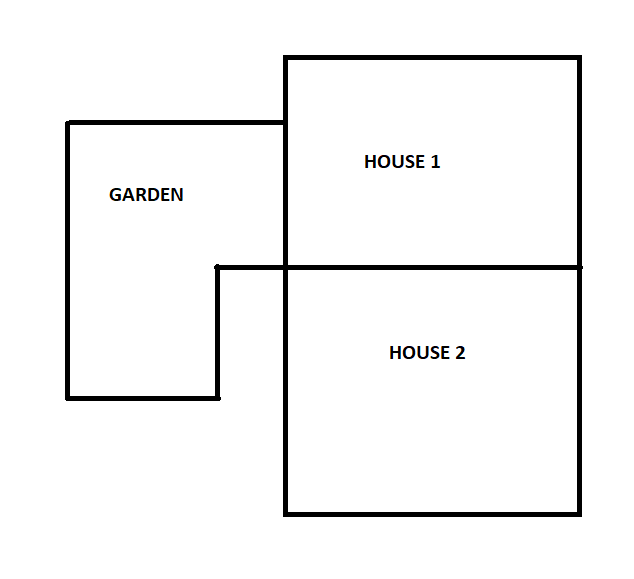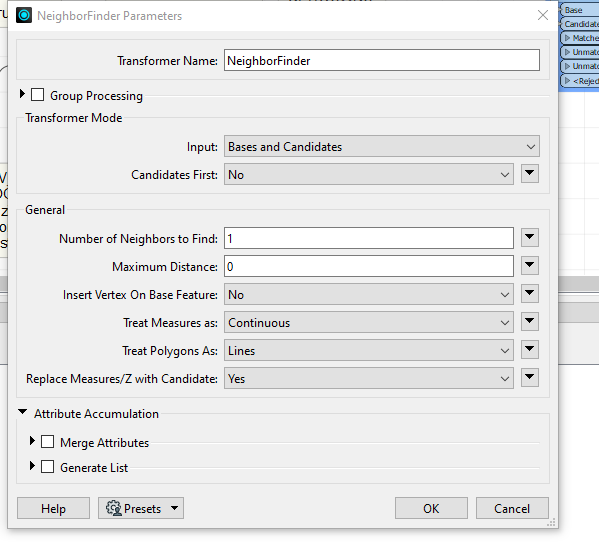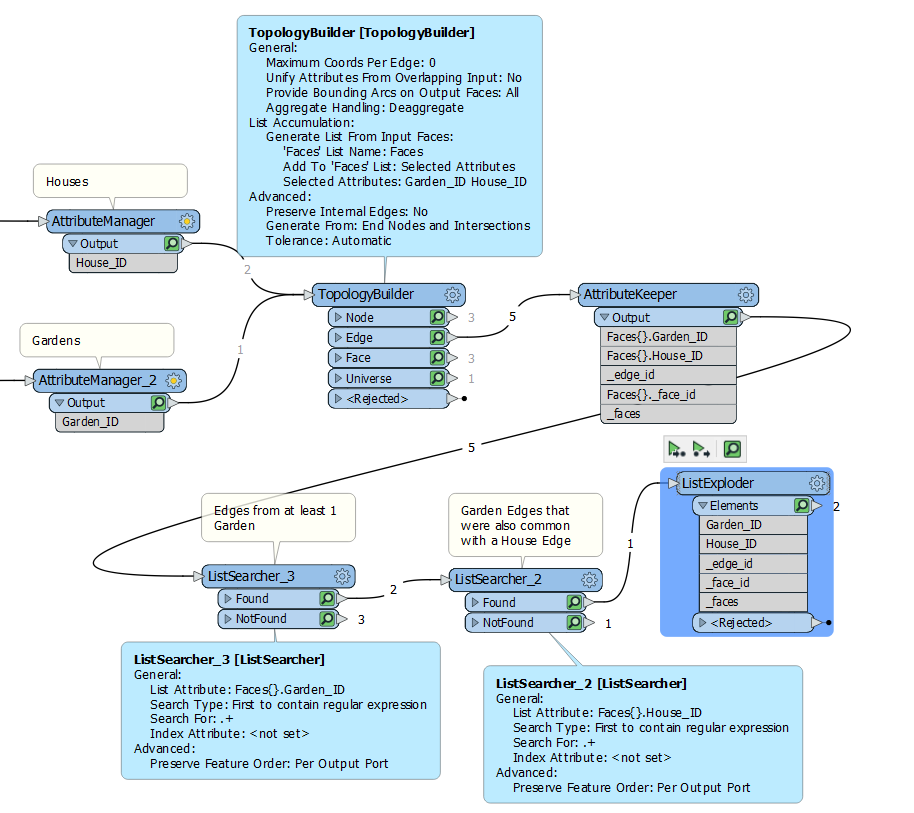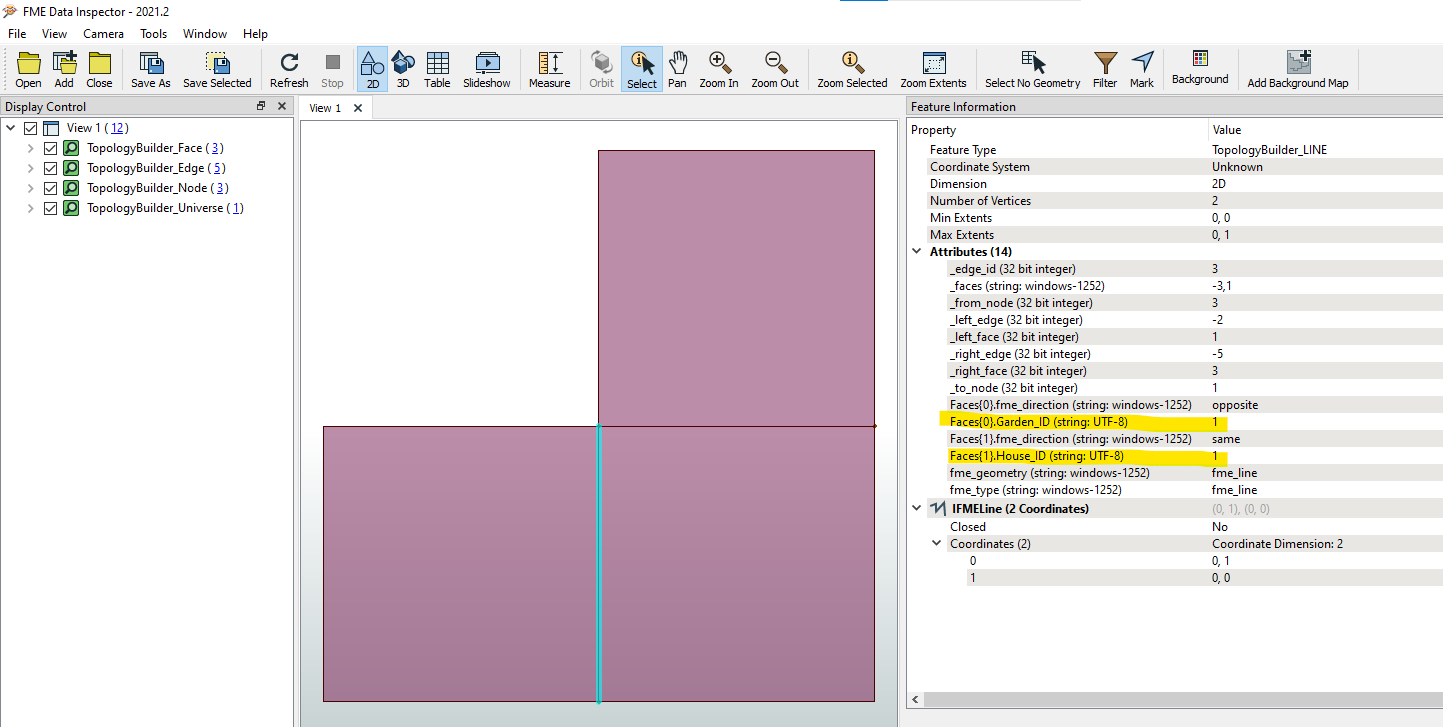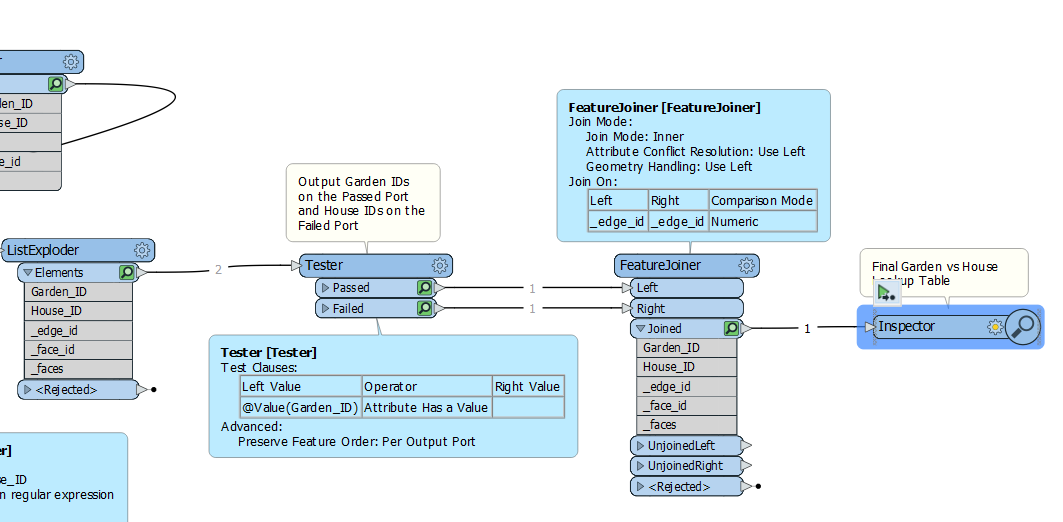Hello everyone,
I am currently making a script that looks for houses that have a garden.
In my current script I have two datasets: 1) houses, 2) gardens
I used for now the NeighborFinder transformer and I have a maximum distance of zero, since the gardens and the houses need to touch one another. So far, so good. However, now I get another problem.
I have the following situation. You can see in the drawn example below that the garden and House 1 share a line, while this is not the case for House 2. However, based on my current settings in the NeighbourFinder, the garden is as well considered a neighbour for House2.
How can I go about it, that House 2 is not included, since House 2 and the garden don't share a line, but only one vertex. Do I need to change some settings in the NeighbourFinder or do I have to go differently about it.
